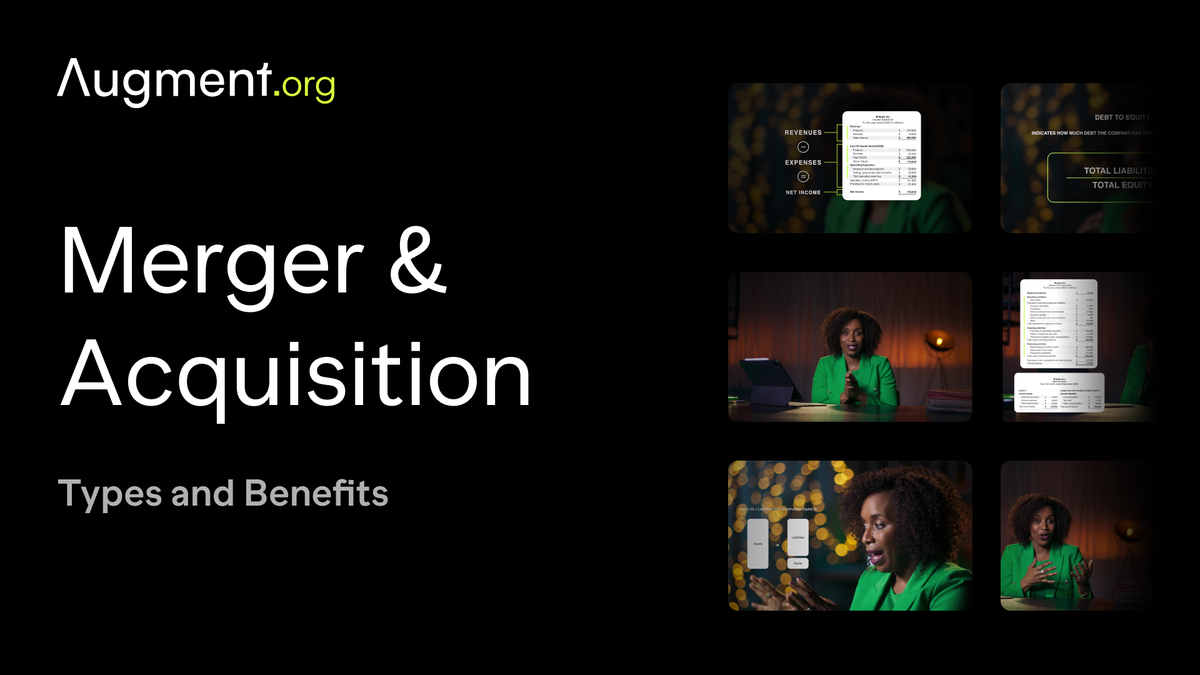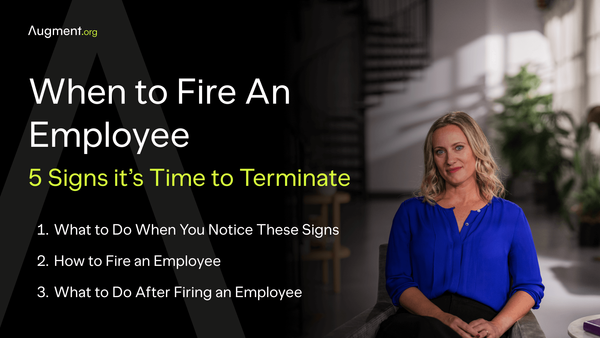Merger and Acquisition Strategies: Types and Benefits
If your business plans to expand market share or enter new markets, you need a merger and acquisition strategy. These strategies enable companies, from private equity firms to tech giants, to acquire assets, secure intellectual property, and save costs.

What are Merger and Acquisition Strategies?
Merger and acquisition strategies are the plans and methods that acquiring companies use to purchase, join with, or take a controlling interest in other businesses. This can involve buying a target company's stock, combining service offerings, or even joining two or more companies from the same industry.
While mergers often involve two companies becoming one new entity, acquisitions typically see one company absorbing another, without creating a new company.
5 Types of Merger and Acquisition Strategies
There are several types of merger and acquisition strategies. Each of them depends on what the acquiring company wants to achieve, how well the target company is doing, and what they bring to the table (like new technologies or key employees). It’s all about making the merged company stronger, smarter, and more profitable.
Horizontal Merger
This is when two companies in the same industry join together. They might do this to get a bigger market share or to reduce their operating costs by achieving economies of scale.
Exemple of Horizontal Merger
One of the standout examples of a horizontal merger occurred when the Walt Disney Company acquired Pixar. This merger, finalized in 2006 for $7.4 billion, brought together Disney, a giant in media and entertainment, and Pixar, a leader in computer animation.
At the time, Disney's animation department was experiencing a slump, while Pixar was producing hit after hit. The merger aimed to enhance Disney's animation quality and diminish competition in the industry.
Vertical Merger
In this type, a company acquires another in its supply chain. It’s like a shoe company buying a lace factory. They do this for better control and sometimes to save money by cutting out the middleman.
Example of a Vertical Merger
In 2016, Microsoft strategically acquired LinkedIn for $26 billion. This move exemplifies a vertical merger, where companies at different stages within the same industry combine. By merging, Microsoft could integrate LinkedIn's networking features into its existing products, enhancing its offerings. LinkedIn, on the other hand, benefited from Microsoft's robust cloud technology and its broad business relationships.
Conglomerate Merger
This is when two companies in completely different industries come together. It's a bit like a clothing brand joining with a tech company. They might do this to spread their risks across different markets.
Example of a Conglomerate Merger
In 2015, Adidas acquired Runtastic, an Austrian digital health and fitness company, for $240 million. This merger combined Adidas's expertise in sports apparel with Runtastic's technological capabilities in fitness tracking, illustrating a strategic expansion into digital health solutions by a traditional athletic wear company.
Market Extension Merger
This happens when companies that sell the same products but in different markets decide to combine. It's like two toy companies from different countries coming together to sell toys to a bigger crowd.
Example of Market Extension Merger
In 2014, Facebook expanded its tech empire by acquiring WhatsApp for $19 billion. This move not only bolstered Facebook's presence in the global mobile messaging market, where WhatsApp was a dominant player, but also allowed Facebook to tap into new international markets, enhancing its overall digital ecosystem.
Acquisitions by Private Equity Firms
These firms buy out companies, often with the plan to fix them up and sell them later for a profit. They're kind of like house flippers, but for businesses.
Example of Acquisition by Private Equity Firms
In 2013, Bain Capital acquired Canada Goose, a luxury outerwear brand, for a substantial but undisclosed sum. Bain Capital's strategic investment focused on expanding Canada Goose’s international presence and direct-to-consumer (DTC) sales channels. By 2017, Canada Goose went public, marking one of the most successful public offerings that year. The IPO valued the company at approximately $1.8 billion, significantly higher than its valuation at the time of Bain’s acquisition.
Book a call with our Program Director
Book a 15-minute call with our Program Director to discuss your goals and what the Augment MBA has to offer.
Speak to an advisorBenefits of Mergers and Acquisitions
When companies come together through mergers or when one company acquires another, it's like a strategic play in a high-stakes business game. These moves can lead to a whole host of advantages that might not be achievable if each company continued on its own.
- Bigger Market Share: When two companies in the same industry combine, like in a horizontal merger, they can grab a bigger slice of the market pie.
- Cutting Costs: By joining forces, companies can save on costs. This could be through sharing office spaces or buying supplies in bulk. It's all about spending less money to make more money.
- Access to New Technologies: Sometimes a big company buys a smaller one just to get its cool new gadgets or smart ways of doing things, which can help the acquiring company stay ahead of the game.
- Getting Into New Markets: Through mergers and acquisitions, a company can start selling its products in places where it didn't before.
- Private Equity Efficiency: Private equity firms often buy companies and reorganize them to work better, which can mean good things for the target company's performance and stock price.
Merger and acquisition strategies are pivotal for business growth, enabling companies to expand market share, diversify risks, and access new technologies. By understanding the different types and benefits of M&A strategies, businesses can get significant value and strengthen their market position



